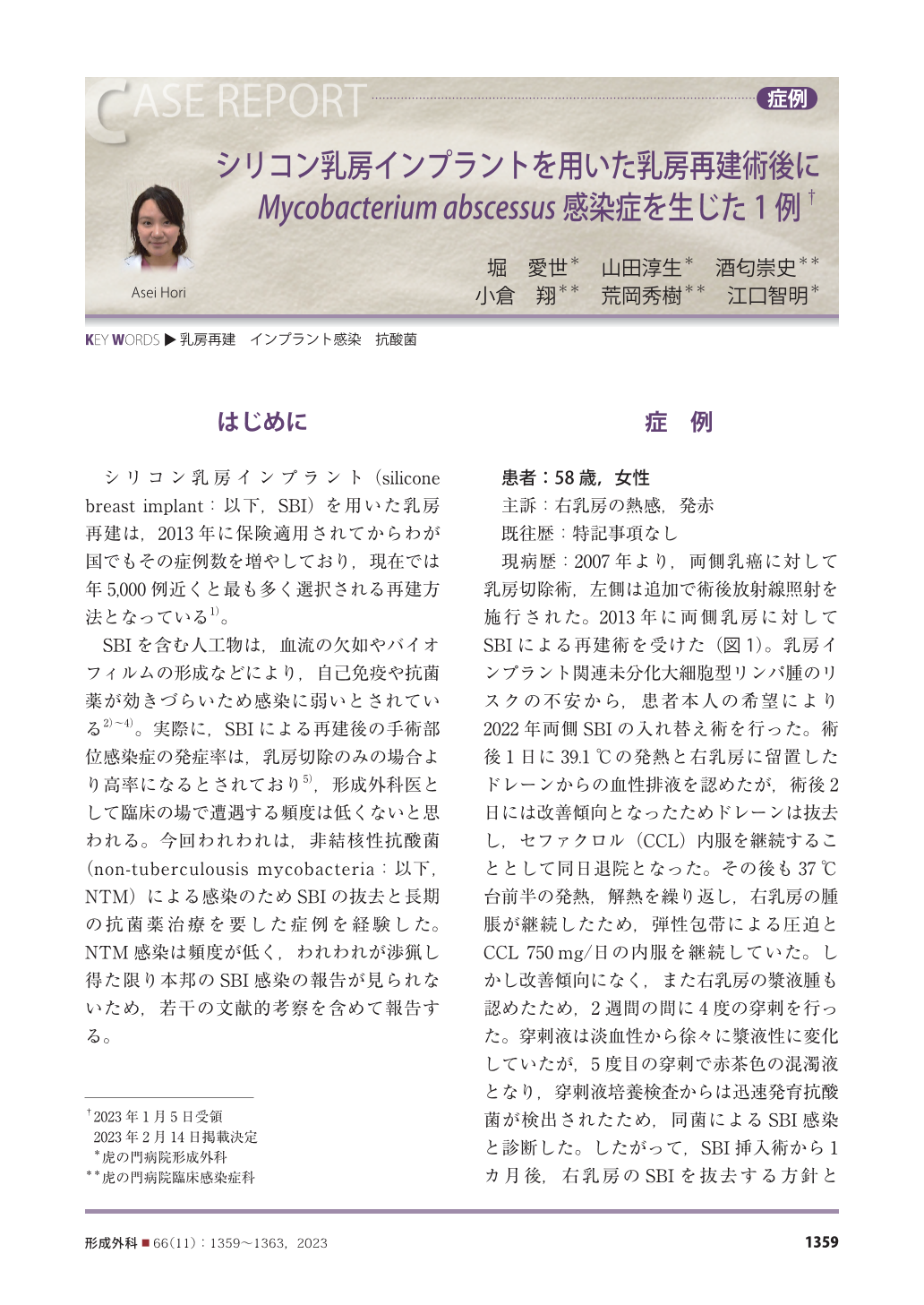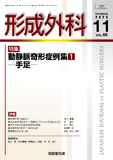Japanese
English
- 有料閲覧
- Abstract 文献概要
- 1ページ目 Look Inside
- 参考文献 Reference
はじめに
シリコン乳房インプラント(silicone breast implant:以下,SBI)を用いた乳房再建は,2013年に保険適用されてからわが国でもその症例数を増やしており,現在では年5,000例近くと最も多く選択される再建方法となっている 1)。
SBIを含む人工物は,血流の欠如やバイオフィルムの形成などにより,自己免疫や抗菌薬が効きづらいため感染に弱いとされている 2)~4)。実際に,SBIによる再建後の手術部位感染症の発症率は,乳房切除のみの場合より高率になるとされており 5),形成外科医として臨床の場で遭遇する頻度は低くないと思われる。今回われわれは,非結核性抗酸菌(non-tuberculousis mycobacteria:以下,NTM)による感染のためSBIの抜去と長期の抗菌薬治療を要した症例を経験した。NTM感染は頻度が低く,われわれが渉猟し得た限り本邦のSBI感染の報告が見られないため,若干の文献的考察を含めて報告する。
Breast implant infection is a major potential complication after breast reconstruction, and the most common causative pathogens are Gram-positive bacteria such as Staphylococcus epidermidis. We report a rare non-tuberculous mycobacteria (NTM) infection in a post-breast reconstruction implant. A 58-year-old woman underwent bilateral breast reconstruction with silicone gel breast implants, and on postoperative day 14 we observed that the right breast implant had become infected. Mycobacterium abscessus was detected by a bacterial culture test from punctured periprosthetic fluid. The right breast implant was removed 1 month after the reconstruction, and we initiated antimicrobial therapy with clarithromycin (CAM), imipenem/cilastatin (IMP/CS), and amikacin (AMK), which lasted for 6 months. M. abscessus infection is rare, and its diagnosis is often delayed. In patients exhibiting an infection and a negative bacterial culture or ineffective empirical treatment, the acid-fast stain test should be considered. For the treatment of an M. abscessus implant infection, the removal of the implant and long-term multi-drug combination therapy based on susceptibility testing are essential.

Copyright© 2023 KOKUSEIDO CO., LTD. All Rights Reserved.


